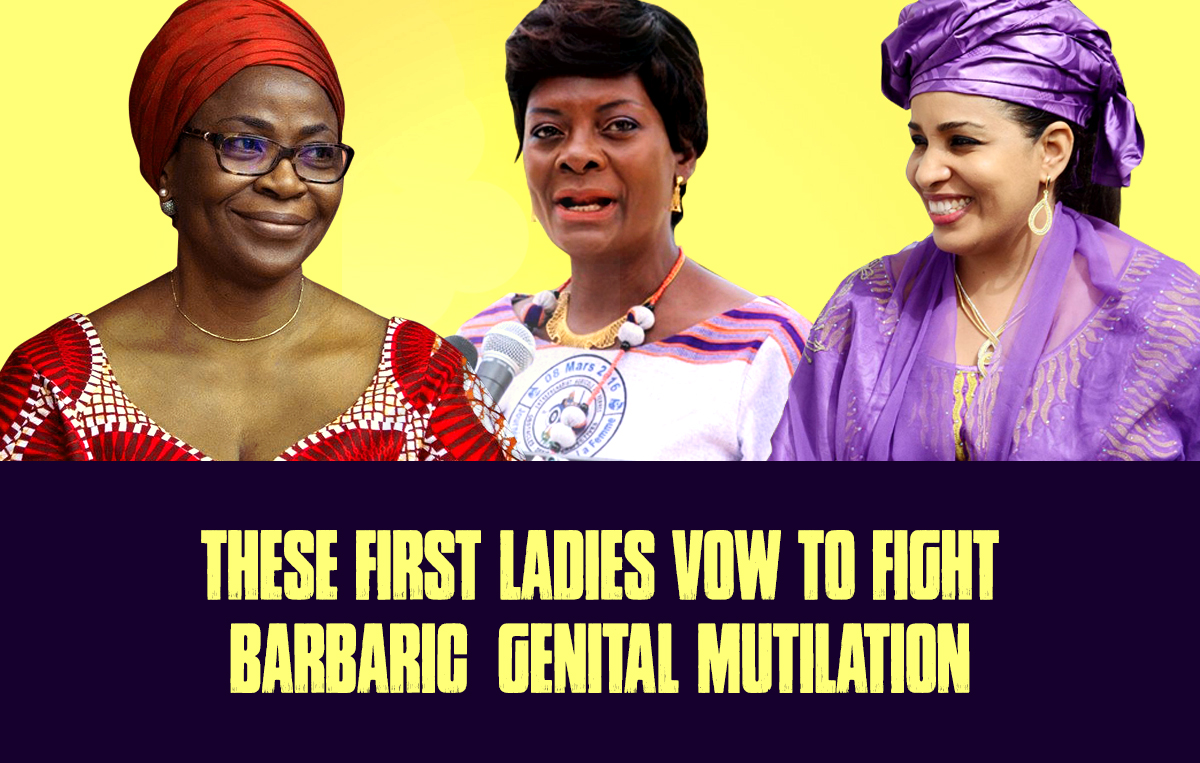Caption: First Lady of Benin Claudine Talon (left), First Lady of Burkina Faso Sika Kabore (center), First Lady of Niger, Lalla Malika (right)
These first ladies vow to fight “barbaric” genital mutilation
Around the world, there are at least 200 million girls and women who have undergone female genital mutilation (FGM). The reasoning behind FGM varies by culture and community. But the outcomes are the same — short and long-term health risks range from extreme pain to infection and even death.
FGM has been banned in Burkina Faso since 1996 and in Benin and Niger since 2003. But despite the ban, the first ladies of these three countries say this practice — that is “barbaric” in the words of Niger’s first lady, Lalla Malika – still occurs in their countries.
Claudine Talon, the first lady of Benin, warned in a recent interview, cutters have developed new ways to circumvent the laws putting young girls and women at risk again.
To avoid discovery, the once commonplace ritual has become riskier as it moves behind closed doors. Families take their daughters across borders into neighboring countries and infant girls are cut shortly after birth or as toddlers before they’ve learned to speak. FGM is so deeply embedded into cultural expectations that some young women who were not cut as children purposefully seek out practitioners to perform the procedure to make themselves more desirable for marriage.
If communities want to win this battle, they must be empowered to inspire change.
Education is widely recognized as one of the most effective tools in the fight against FGM, particularly amongst the youth population. Sika Kabore, the first lady of Burkina Faso, has specifically called for boosts to girls’ education to aid in the eradication of FGM.
Armed with the knowledge about the harmful effects of FGM, future generations can better make educated decisions for their families and independently decide to abandon the practice.
Source one.org



